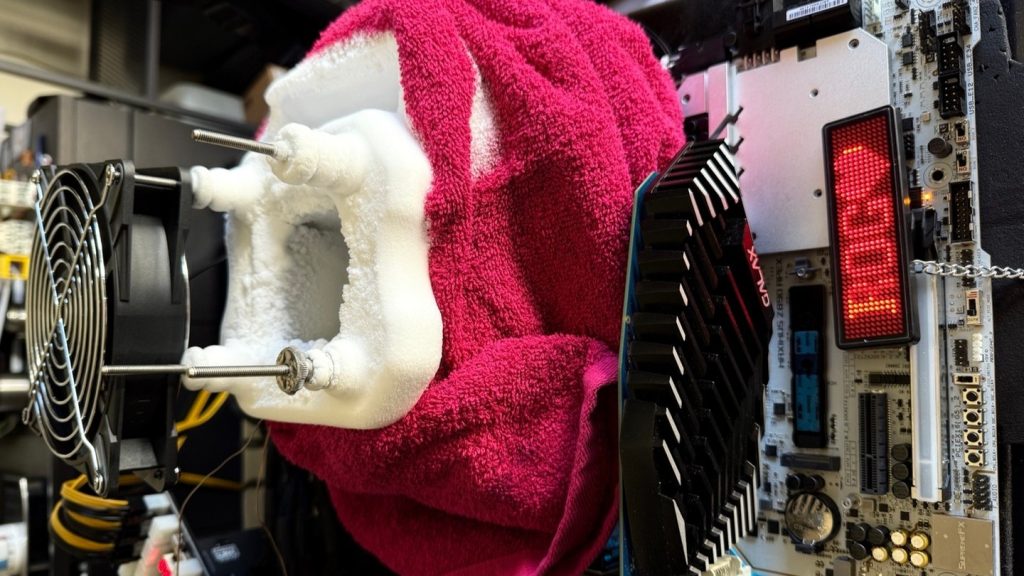The realm of overclocking continues to escalate, with breakthroughs occurring at a blistering pace. Recently, French overclocker, Bl4ckdot, set a new benchmark in DDR5 memory frequencies by achieving an impressive speed of 12,872 MT/s. This remarkable feat not only highlights the rapid advancements in memory technology but also underscores the relentless pursuit of performance within the competitive overclocking community. Utilizing G.Skill’s Trident Z5 DDR5 modules and Intel’s Core Ultra 9 285K processor, Bl4ckdot’s record showcases the extraordinary potential of liquid nitrogen cooling to push components beyond their designed limits.
Breaking the Record
The record-setting performance was accomplished using G.Skill’s Trident Z5 DDR5 memory modules, which utilize SK Hynix integrated circuits (ICs). The setup was complemented by the ASUS ROG Maximus Z890 Apex motherboard, known for its exceptional capability in handling high-performance memory. Bl4ckdot’s record translates to a real frequency of 6431.1 MHz, along with incredibly loose memory timings at CL68-127-127-127-2, settings that would typically overwhelm standard systems. Notably, the achievement has been validated on the popular CPU-Z platform and confirmed through the HWBOT, positioning Bl4ckdot at the forefront of global rankings in DDR5 overclocking.
Configuration Details
Interestingly, the record was recorded using a single-channel configuration with a 24GB G.Skill Trident Z5 DDR5-5600 module, showcasing the effectiveness of strategic overclocking techniques. The memory module was successfully pushed to an effective data rate of 12,872 MT/s (6436.1 MHz real clock) using a memory ratio of 3:188. Such configurations are typical in extreme overclocking sessions, particularly when utilizing liquid nitrogen, which is essential for achieving stability at high frequencies. The specific part number of the memory (F5-8000J3848F24G) indicates it is part of G.Skill’s high-end XMP 3.0-certified 8000 MT/s kits, affirming the use of top-grade components that enhance performance under extreme cooling conditions.
The Competitive Landscape
This milestone dethroned the previous record of 12,832 MT/s set by overclocker known as Saltycroissant, who had held the title for over a month. The competition among overclockers is fierce, with records often being broken within days or even hours. The third spot in the rankings continues to belong to Seby, another prominent figure in the high-speed memory community, and Hicookie is not far behind. This turnover demonstrates the dynamic nature of overclocking, where enthusiasts continually innovate and test the limits of hardware capabilities.
The Implications of Overclocking Records
These overclocking achievements highlight significant advancements in memory technology and production capabilities. G.Skill’s announcement of this achievement was not just a celebratory moment; it served to reaffirm their dominance in the high-performance memory sector. Two years prior, G.Skill had just cracked the 11,000 MT/s barrier, indicating a rapid rate of improvement in memory technology. This latest record is indicative of just how far memory performance has come and suggests that even greater speeds could be achieved in the future. The potential for further growth in DDR5 technology remains substantial, particularly in the hands of skilled overclockers who are willing to experiment with extreme cooling methods.
Market Reaction
The overclocking community has reacted positively to Bl4ckdot’s record, viewing it as a thrilling development in an already exciting field. Overclocking forums and social media channels are buzzing with discussions about the implications of this new record, with many enthusiasts eager to replicate or even surpass this achievement. The continuous refinements in memory technology not only benefit overclockers but also signal enhanced potential performance for general consumers. As manufacturers develop better thermal management systems and integrated circuit designs, end-users stand to gain significantly from these advancements.
In conclusion, the recent overclocking milestone achieved by Bl4ckdot is a testament to the evolving landscape of memory technology and the passionate community surrounding it. With each new record, enthusiasts are reminded of the importance of cooling techniques, component quality, and configuration strategies, all while pushing the boundaries of what is technologically possible. As DDR5 continues to develop, both in terms of performance and accessibility, the anticipation builds for what the future holds in the world of high-performance computing.

